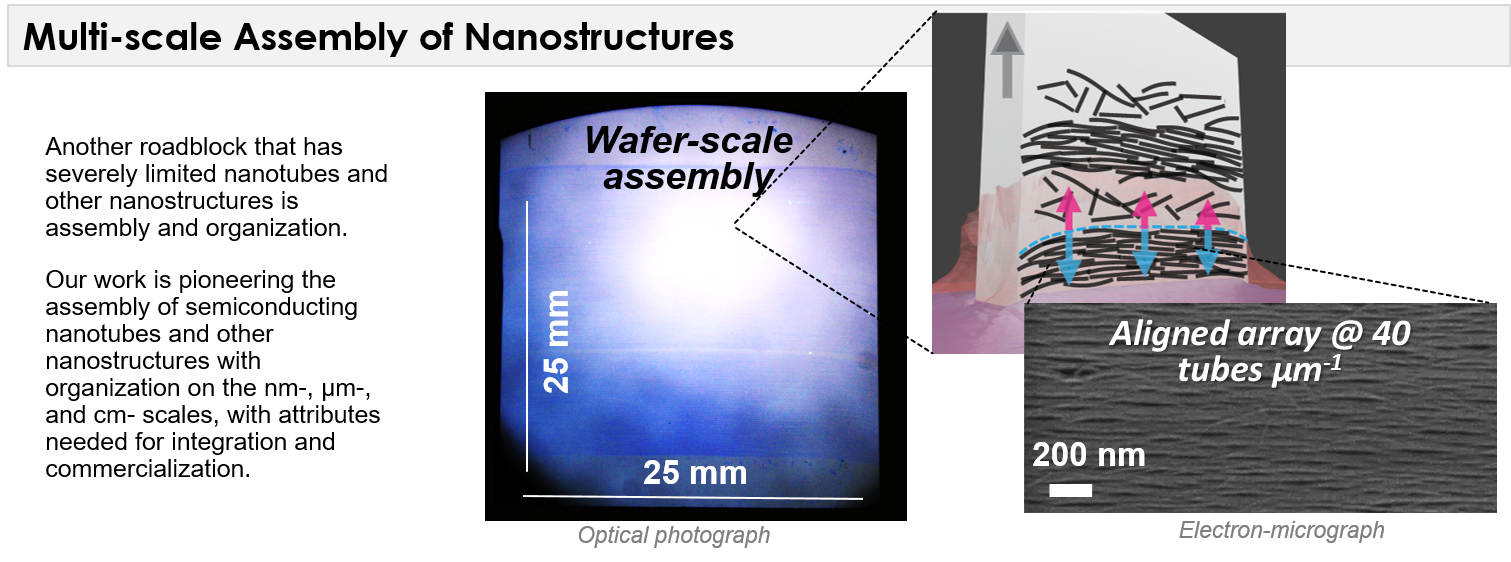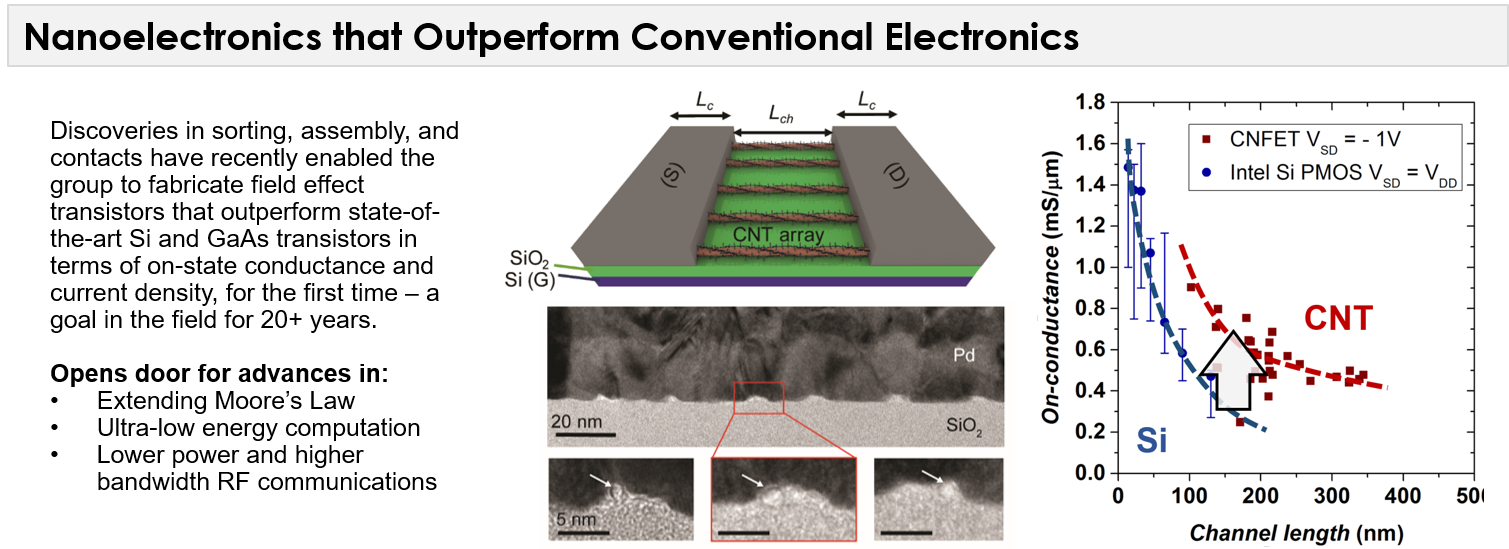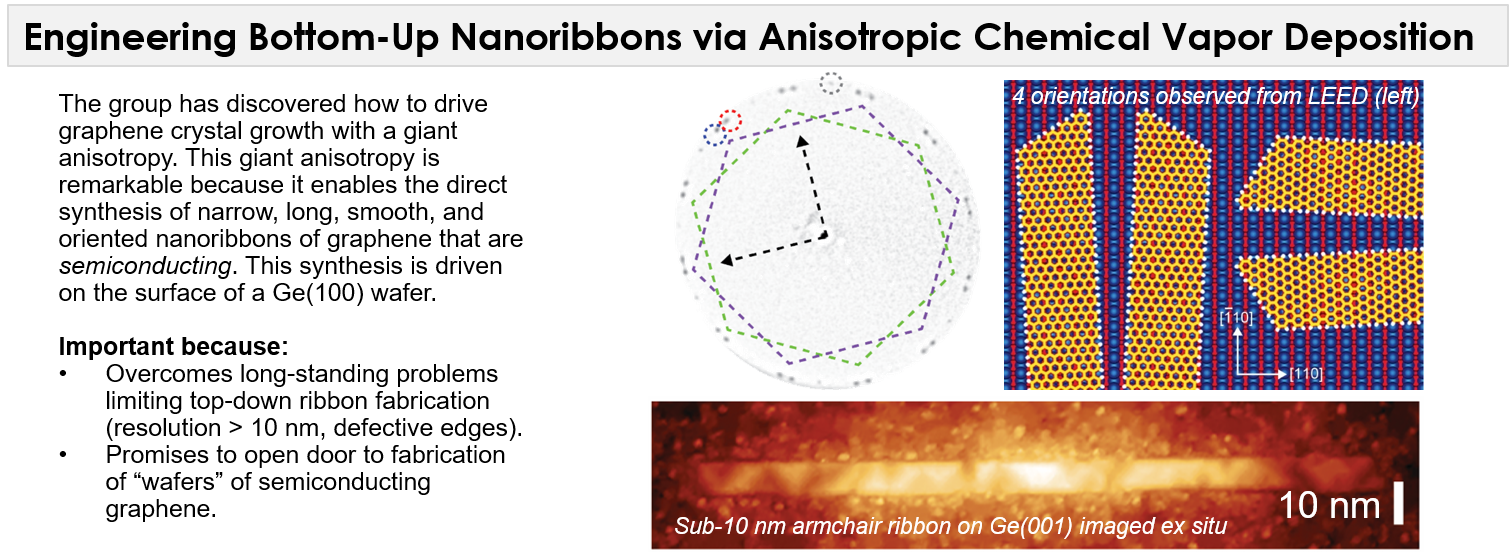
Overview
Materials
The group has a current focus on materials including:
- Carbon nanotubes - seamless cylinders of carbon only one billionth of a meter in diameter
- Atomically thin sheets of graphene
- Two-dimensional materials
- Semiconducting molecules and polymers and
- Heterostructures that integrate these components with conventional, macroscopic materials
Approach
We couple fundamental investigations of synthesis, growth, and processing with in-depth studies of the underpinning mechanisms that control the properties and behaviors of these materials in devices.
The impact of nanomaterials on society has often been limited because it is difficult to synthesize, purity, process, organize, and integrate nanomaterials and nanostructures.
Our research especially draws from multiple disciplines to address fundamental materials challenges -
in controlling the growth, processing, ordering, and heterogeneity of nanomaterials and in understanding
phenomena beyond the scale of single nanostructures - that must be overcome to exploit these exciting components in technology.
Impact
When materials become ultrathin, new electronic and optoelectronic phenomena arise, materials become
dramatically more mechanically resilient and deformable, and the flow of electrical charges and molecules can be more
precisely controlled and sensitively detected. Our research aims to take advantage of these properties in order to realize
transformative gains in:
- Integrated circuits - higher-performance computer chips that extend Moore's law and consume less power
- Communication technologies - lower power and higher bandwidth circuits for wireless communication devices
- Unconventional electronics - circuits that can be folded, stretched, and integrated on clothing or skin
- Solar cells and photodetectors - that are based on novel materials and that are more efficient and sensitive
- Artificial materials - that rapidly and efficiently funnel energy in a fashion that mimics plants and bacteria
- Sensors - More sensitive and selective devices for detecting biological and environmental factors
- Chemical separations - Selectively permeable membranes for separating molecules (e.g. for water desalination) that are substantially thinner and more structurally precise than any existing membrane and thus dramatically more permeable, efficient, selective, and functional.
The research of new materials is important because the performance and efficiency of most applications are ultimately limited by the materials from which they are made.
Selected Publications and Capabilities












